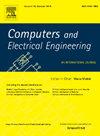Revolutionizing power electronics design through large language models: Applications and future directions
IF 4
3区 计算机科学
Q1 COMPUTER SCIENCE, HARDWARE & ARCHITECTURE
引用次数: 0
Abstract
The design of electronic circuits is critical for a wide range of applications, from the electrification of transportation to the Internet of Things (IoT). It demands substantial resources, is time-intensive, and can be highly intricate. Current design methods often lead to inefficiencies, prolonged design cycles, and susceptibility to human error. Advancements in artificial intelligence (AI) play a crucial role in power electronics design by increasing efficiency, promoting automation, and enhancing sustainability of electrical systems. Research has demonstrated the applications of AI in power electronics to enhance system performance, optimization, and control strategy using machine learning, fuzzy logic, expert systems, and metaheuristic methods. However, a review that includes the recent AI advancements and potential of large language models (LLMs) like generative pre-train transformers (GPT) has not been reported. This paper presents an overview of applications of AI in power electronics (PE) including the potential of LLMs. The influence of LLMs-AI on the design process of PE and future research directions is also highlighted. The development of advanced AI algorithms such as pre-train transformers, real-time implementations, interdisciplinary collaboration, and data-driven approaches are also discussed. The proposed LLMs-AI is used to design parameters of high-frequency wireless power transfer (HFWPT) using MATLAB as a first case study, and high-frequency alternating current (HFAC) inverter using PSIM as a second case study. The proposed LLM-AI driven design is verified based on a similar design reported in the literature and Wilcoxon signed-rank test was conducted to further validate the result. Results show that the LLM-AI driven design based on the OpenAI foundation model has the potential to streamline the design process of power electronics. These findings provide a good reference on the feasibility of LLMs-AI on power electronic design.

通过大型语言模型革新电力电子设计:应用和未来方向
电子电路的设计对于从交通电气化到物联网(IoT)的广泛应用至关重要。它需要大量的资源,时间密集,并且可能非常复杂。当前的设计方法往往导致效率低下,设计周期延长,易受人为错误的影响。人工智能(AI)的进步通过提高效率、促进自动化和增强电力系统的可持续性,在电力电子设计中发挥着至关重要的作用。研究已经证明了人工智能在电力电子领域的应用,通过机器学习、模糊逻辑、专家系统和元启发式方法来提高系统性能、优化和控制策略。然而,包括最近的人工智能进展和大型语言模型(llm)(如生成预训练变压器(GPT))的潜力的综述尚未报道。本文概述了人工智能在电力电子(PE)中的应用,包括llm的潜力。强调了LLMs-AI对PE设计过程的影响以及未来的研究方向。先进的人工智能算法的发展,如预训练变压器,实时实现,跨学科合作和数据驱动的方法也进行了讨论。提出的LLMs-AI用于设计高频无线电力传输(HFWPT)的参数,以MATLAB为第一个案例研究,以PSIM为第二个案例研究高频交流电(HFAC)逆变器。根据文献中报道的类似设计对提出的LLM-AI驱动设计进行验证,并进行Wilcoxon签名秩检验以进一步验证结果。结果表明,基于OpenAI基础模型的LLM-AI驱动设计具有简化电力电子设计过程的潜力。这些研究结果为LLMs-AI在电力电子设计中的可行性提供了很好的参考。
本文章由计算机程序翻译,如有差异,请以英文原文为准。
求助全文
约1分钟内获得全文
求助全文
来源期刊

Computers & Electrical Engineering
工程技术-工程:电子与电气
CiteScore
9.20
自引率
7.00%
发文量
661
审稿时长
47 days
期刊介绍:
The impact of computers has nowhere been more revolutionary than in electrical engineering. The design, analysis, and operation of electrical and electronic systems are now dominated by computers, a transformation that has been motivated by the natural ease of interface between computers and electrical systems, and the promise of spectacular improvements in speed and efficiency.
Published since 1973, Computers & Electrical Engineering provides rapid publication of topical research into the integration of computer technology and computational techniques with electrical and electronic systems. The journal publishes papers featuring novel implementations of computers and computational techniques in areas like signal and image processing, high-performance computing, parallel processing, and communications. Special attention will be paid to papers describing innovative architectures, algorithms, and software tools.
 求助内容:
求助内容: 应助结果提醒方式:
应助结果提醒方式:


